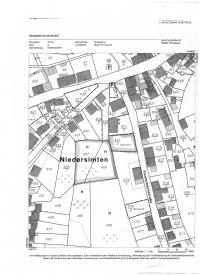Re-building – The significant experience of Berlin After the fall of the Wall, the city became the largest building yard in the world achieving great urbanity Berlin – the German capital city – is renowned for its commitment to keep the flag of building re-styling flying high. After the fall o ...
Re-building – The significant experience of Berlin
Re-building – The significant experience of Berlin
After the fall of the Wall, the city became the largest building yard in the world achieving great urbanity
Berlin – the German capital city – is renowned for its commitment to keep the flag of building re-styling flying high. After the fall of the Wall, the city was in desperate need of improvement to overcome the negative aspects of its past and became the largest building yard/laboratory in the world. It was overcome by Shanghai only later, in 2000.
The demolition/reconstruction process has been carried out by taking special actions aimed at preserving the existing urban matrix of the city. Skilled and creative architects and have worked hard to implement the project for a “Critical Reconstruction” of the city.
Juan Lucas Young – a partner of Sauerbruch Hutton – said it has always been easy to intervene on existing properties in Berlin, thanks to the wide availability of free spaces. Sauerbruch Hutton won the architectural competition for the design of Gsw Headquarter in 1993, which required an advanced building-surgery intervention. The entire neighbourhood had been destroyed and the old building stood between the two walls. A slightly-curved glazed blade was juxtaposed to the old 16-storey tower and connected to the existing building through a glazed functional block. The ventilation system and the brightly-coloured corrugated iron coating allow a 40% energy saving as well as the control of natural light entering the building.
In Berlin, something extraordinary has been achieved. The “murdered city” has been transformed into a “vibrant city” with great urbanity, but it is not the place for experimentation anymore. The German capital’s urban and architectural energy has gradually waned in the latest years, but those who are interested in re-building must resort to the significant experience of Berlin.
Difficulties and time lags always depend on market trends. In Germany, the demand for office spaces is sluggish; therefore, developers focus on the improvement of quality. The situation is very different in London, where office spaces are still highly demanded. Italy is another country that is particularly sensitive to architectural sustainability.
Read also:
· Investing in Kreuzkölln, the epicentre of cool in Berlin
· Tear out walls, revamp your house
· Metamorphosis of existing properties
· Düsseldorf: a cleaner skyline for an ancient city
· Revamping a shopping centre to reposition it in the marketplace
Related Insights
-
Re-building – The significant experience of Berlin
Real Estate Listings
For sale Bar/Restaurant/Nightclub, Germany, Bornheim, wesseling, Bahnhofstrasse 26

For sale
Bar/Restaurant/Nightclub
67 m²
For sale Development Property, Germany, Stolberg (Rheinland), Pirmasens, Niedersimten

For sale
Development Property
990 m²
For sale Bar/Restaurant/Nightclub, Germany, Aalen, Neresheim, Marktstraße 4 Neresheim

For sale
Bar/Restaurant/Nightclub
180 m²
For sale Bar/Restaurant/Nightclub, Germany, Ingolstadt, Ingolstadt, Mercystrasse

For sale
Bar/Restaurant/Nightclub
300 m²
For sale Development Property, Germany, Koblenz, 56288 Lahr, Hochstraße 4

For sale
Development Property
902 m²
For sale Development Property, Germany, Villingen-Schwenningen, Schwenningen(OT), Karl-Marx-Straße 23, 78054 Villingen-Schwenningen

For sale
Development Property
274 m²
For sale Bar/Restaurant/Nightclub, Germany, Rosenheim, Rosenheim, Münchener Straße 34

For sale
Bar/Restaurant/Nightclub
45 m²
For sale Business, Germany, Kempten (Allgäu), Kempten, Kempten

For sale
Business
200 m²
For sale 2 Bedrooms, Germany, Bad Oeynhausen, München, St.-Bernhard-Straße 1, 86438 Kissing

For sale
2 Bedrooms
48 m²
For sale Villa, Germany, Bad Oeynhausen, München, Rhododendronweg 13 Lerchenau

For sale
Villa
150 m²
